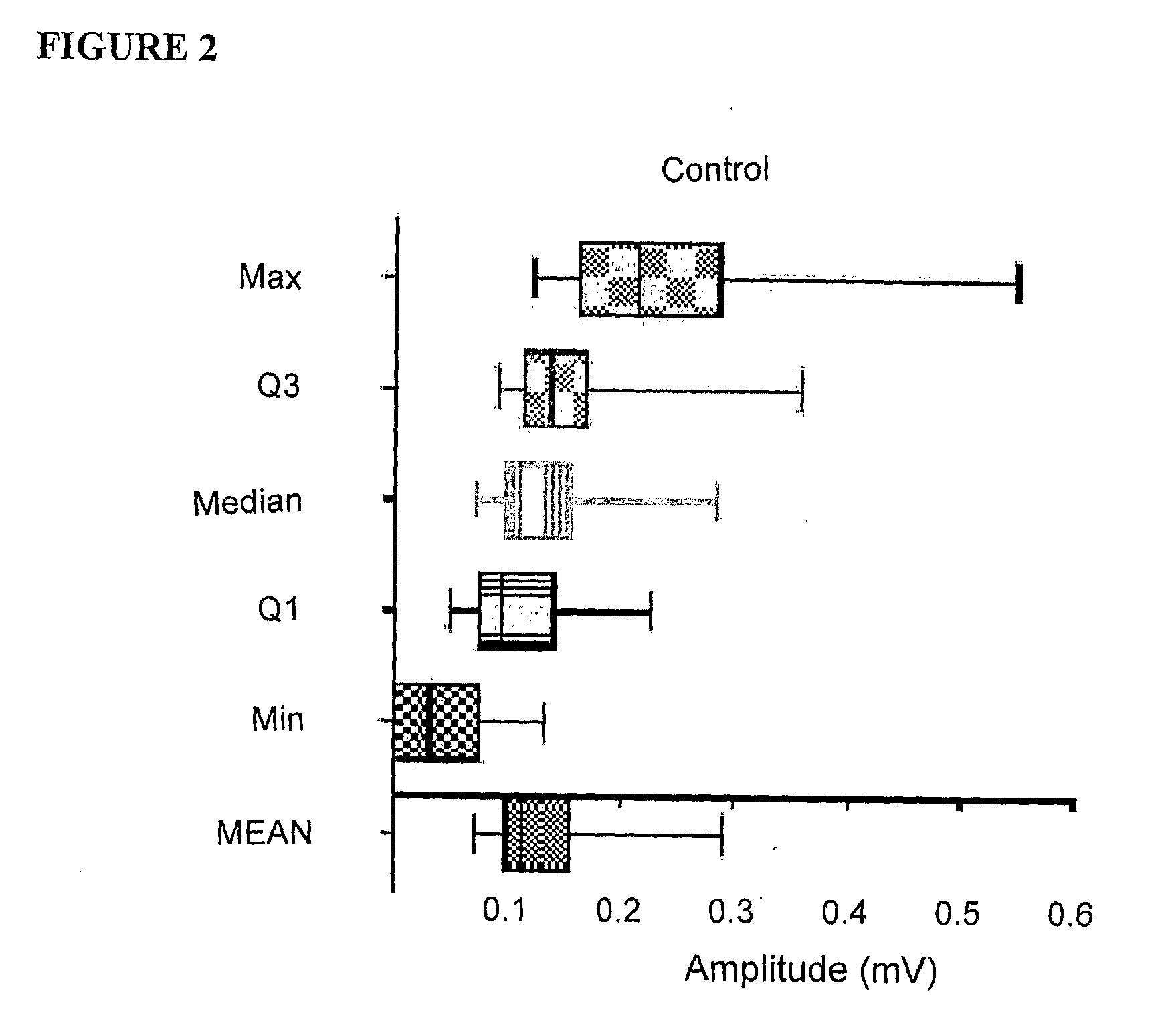Methods of relieving stress
a stress and stress-relief technology, applied in the direction of biocide, plant growth regulator, detergent composition, etc., can solve the problems of life-threatening, deteriorating the health of an animal, etc., and achieve the effect of reducing the level of cortisol in saliva, and quick and accurate respons
- Summary
- Abstract
- Description
- Claims
- Application Information
AI Technical Summary
Benefits of technology
Problems solved by technology
Method used
Image
Examples
example 1
[0083]Mice were exposed to two stressors concurrently, social deprivation and the presence of predators (rats in separate cages) for 10 to 12 days with or without the following odours or combination of odours, cis-2-hexen-1-ol, trans-2-hexen-1-ol, trans-3-hexen-1-ol, trans-2-hexenal, cis-3-hexen-1-ol, α-pinene and a combination of cis-3-hexen-1-ol and trans-2-hexenal. Two controls were used: mice not exposed to stress and mice exposed to stress together with triethyl citrate vehicle. The mice were monitored for up to 4 days after the stressors were removed.
[0084]FIG. 1 shows the mean excitatory junction potentials from 12 to 15 different electrode recording sites from 3 animals for each treatment (light bars) determined by electrophysiological examination as described above. The standard deviation is shown by the dark bars with a* indicating pcis-3-hexen-1-ol>trans-2-hexenal>α-pinene>cis-2-hexen-1-ol>trans-3-hexen-1-ol>trans-2-hexen-1-ol.
example 2
[0085]Using the method of Example 1, four combinations of odour compounds were investigated:[0086](i) 0.005% volume cis-3-hexen-1-ol (CH), 0.005% volume trans-2-hexenal (TH), 0.005% volume α-pinene (ap);[0087](ii) 0.1% volume CH, 0.1% volume TH and 0.1% volume ap;[0088](iii) 0.05% volume CH, 0.05% volume TH and 0.05% volume ap; and[0089](iv) 0.03% volume CH, 0.03% volume TH and 0.015% volume ap.
[0090]All four combinations were effective at reducing changes in sympathetic neurotransmission with the greatest reduction produced by the combination of 0.03% volume CH, 0.03% volume TH and 0.015% volume ap.
example 3
[0091]Mice were placed in cages with one mouse per cage (social deprivation) in a room that contained cages with rats (predators) without odours (control). Another group of mice were exposed to the same stress as the control but were also exposed to 0.03% volume CH, 0.03% volume TH and 0.015% volume ap (treated). Box plots of the excitatory junction currents (EJC) obtained by electrophysiological methods are shown in FIG. 2 (control) and FIG. 3 (treated) and indicate the maximum EJC amplitude (Max), the distribution of 3rd quartiles (Q3), the median, the distribution of the 1st quartiles (Q1) and the distribution of the means. The data is from 16 animals from each treatment with at least 40 recording sites. The EJC amplitudes are significantly reduced in the animals exposed to odours during the stress exposure (10 to 14 days).
PUM
| Property | Measurement | Unit |
|---|---|---|
| pH | aaaaa | aaaaa |
| thick | aaaaa | aaaaa |
| volume | aaaaa | aaaaa |
Abstract
Description
Claims
Application Information
 Login to View More
Login to View More - R&D
- Intellectual Property
- Life Sciences
- Materials
- Tech Scout
- Unparalleled Data Quality
- Higher Quality Content
- 60% Fewer Hallucinations
Browse by: Latest US Patents, China's latest patents, Technical Efficacy Thesaurus, Application Domain, Technology Topic, Popular Technical Reports.
© 2025 PatSnap. All rights reserved.Legal|Privacy policy|Modern Slavery Act Transparency Statement|Sitemap|About US| Contact US: help@patsnap.com



